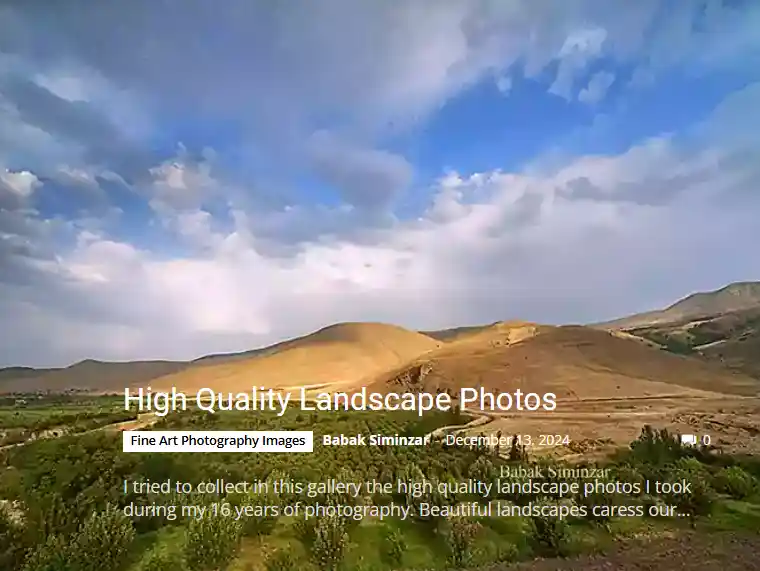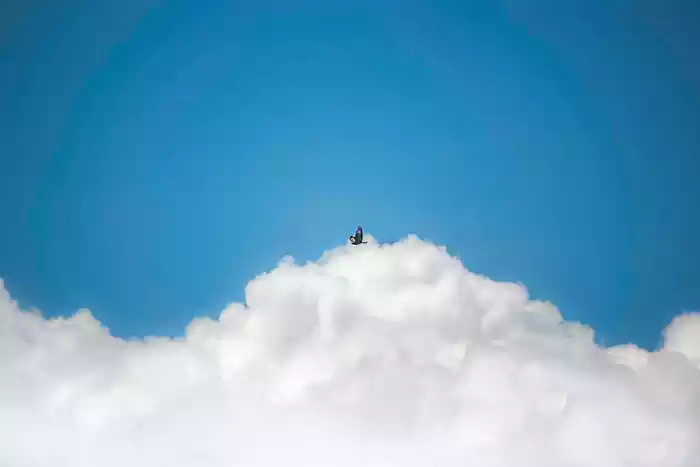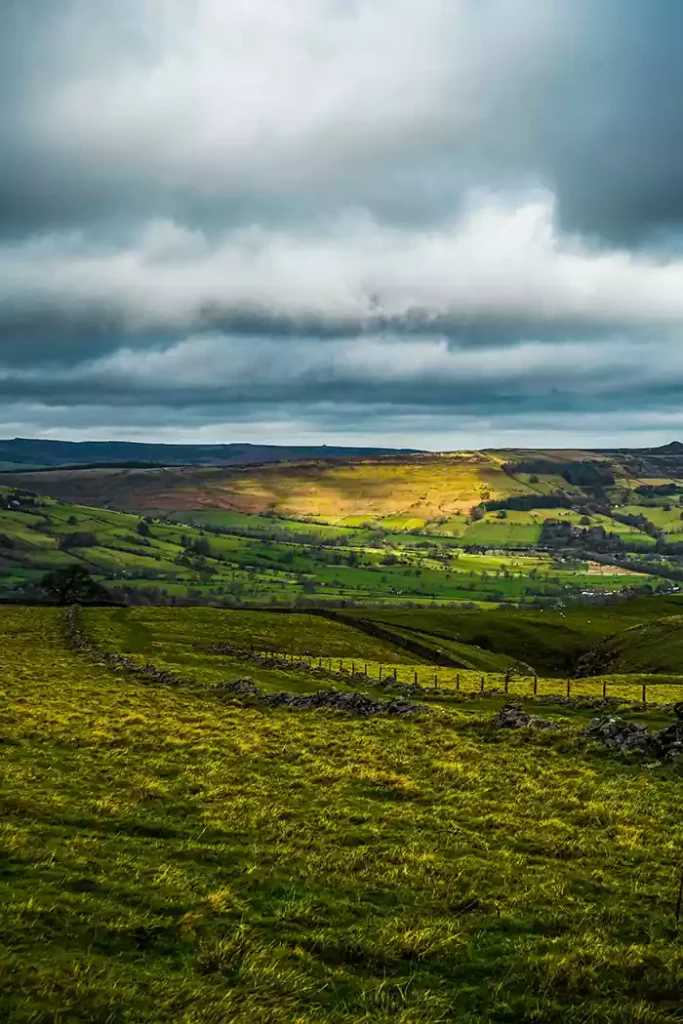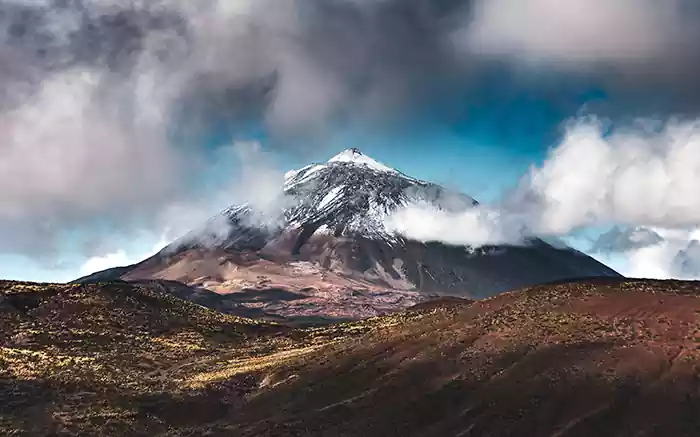Watching beautiful landscape photos is one of the most enjoyable pastimes. Scenery photography is one of the oldest and most popular styles of photography. I hope discussing landscape photography tips for beginners will be helpful for all fans. We usually have pictures of nature on the walls of our houses. Or we set these pictures for our desktops on the monitor or screen of our phones.
Nature often calms the mind and relieves our tiredness. Images taken from nature subconsciously remind us of our desires.
Shooting from forests, lakes, rivers, mountains, beaches, plains, or deserts can produce endless images. People are inspired by watching them and wish to see those places with their own eyes one day.
Each season has its charm. Spring, with its light green color; autumn, with its yellow leaves; and winter, with snow-white, is attractive and impressive.
Topics
- What kind of landscape does your portfolio consist of?
- Decide where you want to shoot and get there
- Do not get tired of repeating the shooting of a scene
- Technical tips for landscape photography for beginners
- Night photography
- Nature and landscape photography tips and techniques for beginners
- Conclusion
- Sources
What kind of landscape does your portfolio consist of?
The answer is, in what region and climate do you live? Or where can you travel for scenery photography?
Most of your photos are taken from your climate because this environment is available to you. Sometimes, an interest in photography makes you bear the pain and cost of travel, spend a few days of your daily work, and travel to other areas for more variety in photography.
The most beautiful images are taken on social networks in green and humid environments, which are suitable for teaching landscape photography for beginners. Photographing lakes, forests, beaches, and waterfalls is gorgeous and captivating. Visit Fine Art Landscape Photography to read more articles about landscape photography.
Unfortunately, I was not very lucky in this regard. There are few waterfalls in my area, and these waterfalls are tiny, with little water flowing in them. We had a lake that was salty but amazing.
Due to climate change, the area of this lake has been drastically reduced for several years and is close to the drying stage. I’m talking about Urmia Lake.
Rivers that were once full of water are now either completely dry or only have water for a few months of the year.
There is no forest at all in this area. Forests form a small area of Iran. If I want to go to the nearest forest, I have to drive hundreds of kilometers. Because there are few forest areas in the country, rich people have come to the woods of other regions, destroyed the forest in the parts along the road, and built villas.
Well, that makes my job more difficult. I can no longer access the forest on the side of the road, and I have to go to the depths of nature with my backpack and camera and lenses on foot. I like this, but it is incompatible with my physical condition.
I hope you are luckier than me. At first, this situation made me very upset. Later, when I saw what exciting pictures some people take of the desert and share them, I changed my mind.
I realized I could take exciting pictures of dry mountains, fields, and almost empty plains.
Decide where you want to shoot and get there
Whether you go by car or on foot, you will find sights worth photographing while traveling.
There will be times when you will find an exciting scene to photograph. But you will notice that the sunlight angle is unsuitable for this. So next time at another time, you need to go back there.
The last thing I want to say is do not be afraid of cloudy and rainy weather. Although such weather will make your job harder, great images will be created. All in all, it’s worth it.
Do not get tired of repeating the shooting of a scene
As I said before, not only will you have to return to one location due to the light and weather conditions, but it is better to repeat the shooting from different angles and different compositions each time. So that you can get closer to the best.
For example, you might see a view of a valley with several trees. It is interesting. You want to take a picture, so you get out of the car, but you find that the trees near you limit your horizons. So you go lower to get past them. Finally, you take the photo.
But looking at it on a computer monitor doesn’t seem to work for you. Only then do you realize that the secret to taking a good photo of the mountain is to climb the hill in front of it and take a picture. Then, the obstacles on the ground are removed from the scene. So, a tip for landscape photography for beginners from a high-altitude area is that shooting from a lower altitude is not a good idea.
Technical tips for landscape photography for beginners

Please take a look at High Quality Landscape Photos Gallery to see more images
Landscape photography lens
If you have a DSLR camera, I recommend having a wide-angle, telephoto, and standard lens with you. Because the views that catch your eye will be at different distances from you, sometimes from the point where you stand, you can cover the entire front view and create a spectacular image with a wide-angle lens.
Sometimes the subject is far away from you, for example, there are some trees on a hill, maybe there are animals. In this case, the telephoto lens will help you.
And sometimes, you will find grasses and trees near you disrupt the composition of the image. A wide lens is not suitable for such conditions; it is better to use a standard lens.
Landscape photography tips for beginners: Aperture and depth of field
In scenery photography, try to use a small aperture, such as f / 22 to f / 16. These numbers are inversely proportional to the diaphragm’s opening.
The narrower aperture increases the depth of field, which is essential in scenery photography. It will enable components located farther away from the camera to be seen clearly in the image.
However, one disadvantage of using f / 16 to f / 22 is that the light is dim, and you have to slow down the shutter speed.
Tripod, and ISO
A slow shutter speed can cause the image to blur due to handshake. Therefore, you must use a tripod if the ambient light is low.
The tripod I have is cheap, with weak bases. But this feature makes it valuable to me: It is easier to carry because it is light!
The following solution is to increase the ISO. Depending on the amount of light, you can use ISO 200, 400, or 800. But I do not recommend values higher than that. Because they cause tiny colored spots in the image, removing them in Photoshop is not easy.
The best settings for landscape photography are a small aperture, a tripod, and, if necessary, high ISO.
Filters
Filters were more common in the past. With the development of graphic software, their use has decreased, but there are still people who insist on using filters.
Polarize Filter
The Polarize filter removes reflected light from glass, river water, sea, and snow. A small knob next to it allows you to remove excess reflected light by changing the angle.
In my personal experience, shooting clouds with a Polarize filter makes them appear more precise and sharper in the image—one of my landscape photography tips for beginners!
Neutral Density Filter
The neutral-density filter is dark in color and reduces all wavelengths of visible light. Sometimes, you want to photograph the flow of river water in a blurred state. On the other hand, if the ambient light is high, you will have to increase the shutter speed.
As a result, you will get an accurate and sharp image of water waves. However, this may not be in line with your intentions. The ND filter works here because you can reduce the shutter speed by reducing light. Therefore, fast-flowing water waves will be recorded as blurred.
The blurring of the water waves can give a special effect to the image.
Soft Graduated Neutral Density Filter
In scene photography, it sometimes happens that too much light in the sky prevents proper shooting of components on the ground. In these cases, an ND filter is used, half of which is transparent, and the other half is dark like an ND filter. The photographer places the sky in the dark while composing and reduces the amount of light.
Hard Graduated Neutral Density Filter
In this sub-branch of the ND filter, the border between the dark and transparent parts is prominent, and the darkness from the border between the two areas has started completely.
Conversely, in the soft types of graduated Nd filter, the darkness starts slowly from the middle and gradually intensifies.
Reverse Graduated Neutral Density Filter
In this type of ND filter, unlike the Soft Graduated Neutral Density Filter, the darkness starts with the maximum amount in the middle and reaches the minimum at the filter’s edge.
This version is used to photograph the sunset and sunrise to reduce the effect of high sunlight, a tutorial point for landscape photography for beginners.
Skylight filter
The skylight filter reduces the effect of excessive blue light on the rocks, soil, and other components. Some people even carry it with them in scenery photography and use it as a lens protector, Unlike other photographers who use a UV filter as a lens protector.
Night photography
You will need a tripod for night photography. It is better to find a place where humans live. The goal is for the lights to create a view from a distance in the dark.
The shooting location can be a remote village. Or a view of the city that fills the whole area of the picture or a street. The camera must be completely fixed on a tripod because the exposure time will be too long.
Please don’t increase the ISO level; otherwise, dark areas will be recorded as daylight, a landscape photography tip for beginners! If cars or trains pass through long shots, their effect will remain as light lines in the image, which will be interesting.
Last, make sure you use a small, narrow aperture, such as f / 16 to f / 22. These aperture settings will allow the lights to be recorded clearly at a distance from you. Otherwise, they will look dull.
Of course, using a narrow aperture will extend the shooting time; one of landscape photography tips for beginners!
Nature and landscape photography tips and techniques for beginners
Nature is a natural place for landscape photography and varies depending on the climate of each region.

Please take a look at High Quality Landscape Photos Gallery to see more images
Clouds
Clouds play an important role in beautifying images. That’s why I told you before that cloudy or rainy weather should not cancel your trip.
Any cloud helps shape the sky in the image. For example, cumulus clouds, with their puffy shapes that look like domes, are stacked on top of each other, giving the image a kind of grandeur.
Cirrus clouds, located at higher altitudes and scattered in the sky, provide a more subtle image.
The completely cloudy sky, especially before or when it rains, covers the tops of the mountains and mysteries the valleys, making this image romantic.
Sunlight during sunrise and sunset over the clouds will be unique when the sun is hidden behind an obstacle.
As mentioned above, water on the earth’s surface, such as a lake or a river, increases the image’s attractiveness many times.
The importance of Mountains in landscape photography tips for beginners
How high are you able to climb? The more you can do, the more valuable it will be. This topic could not be more actual to me. Due to my heavy weight and physical condition, I use a car to climb heights. And so, I am limited to the distance and altitude that the vehicle can climb.
I remember about 20 years ago, I could barely walk from a height of 1400 meters above sea level to an altitude of 3500 meters with a group of people I was with them.
A photo taken from a high point of view is unique. All the mountains, hills, and valleys below you will be visible. And, of course, the plain in front will be beautifully seen.
Usually, photography of the plain will be more attractive if done from a higher altitude; one of landscape photography tips for beginners!
Snow mountains are also great subjects for scenery photography. Of course, it is best to use a wide-angle lens, but this is not always possible. For example, if you want to take a picture of a snowy mountain far away from you in the summer, you will need a telephoto lens.
Taking mountain wildlife pictures would be great, but you need a little luck.
Water! Sea, lakes, rivers, waterfalls
All of the above are among the best for nature photography. The reflection of other components of the picture in water, like sunlight, clouds, trees, or mountains, makes it extraordinary.
The view of the beach with rocks or palm trees, the waves of the sea or the twists and turns of a river in its path, and most of all, the amazing views of the waterfalls are great for photography.
Jungle photography tips for beginners as a landscape image
If you lie on the ground in a dense forest and look at the sky with the camera while the trunks of the trees surround you and the clear sky can be seen through their leaves, you will be able to create a fantastic image; one of landscape photography tips for beginners!
Or, wandering in the forest, you may find a dirt or country road, for which the branches of thick trees seem to have built a roof.
Finding a bridge in the forest or a cottage is possible, all suitable subjects.
For example, it will be heartwarming if a mountain forest is photographed from a higher altitude.
Finally, if you find a forest, please take pictures of the trees alone. I have the same problem exactly. The tree is lonely, as its name implies.
A plain or mountain surrounds it. Although the tree, in such circumstances, is a reminder of endurance and hope for life, it is entirely romantic.
Minimalism
Usually, the subject is tried to be distinctive, prominent, and noticeable in the image.
In minimalism, the opposite is true. For example, suppose someone is sitting at the end of a pier and is watching the sea. He is the main subject of our photo. But the photographer uses a wide-angle lens, distances himself from the subject, goes to the pier first, and takes a picture of him.
The image’s main subject is small, and its details are not precise. We also see the entire length of the pier and the sea surrounding the subject in the picture. Now, the question arises: What was the main subject from the beginning?
Another way is to take pictures of boats in the sea from a distance. Or a few people seem to be walking in the snowy mountains from a great distance. They look like black dots in snow white.

Conclusion
Excellent images can be created by photographing forests, rivers, plains, and mountains.
Most people enjoy watching such scenes. You just have to be familiar with some of the basics, such as composition and exposure.
You will get better results if you are familiar with editing images in graphic software and landscape photography tips for beginners!
If like me, you live in an area that is relatively dry and does not have a lot of greenery, the black and white and monotonous version will help you.
All you have to do is leave the house and look for the subject.
Good Luck!
Sources
https://www.adorama.com/alc/basic-landscape-photography-tips













